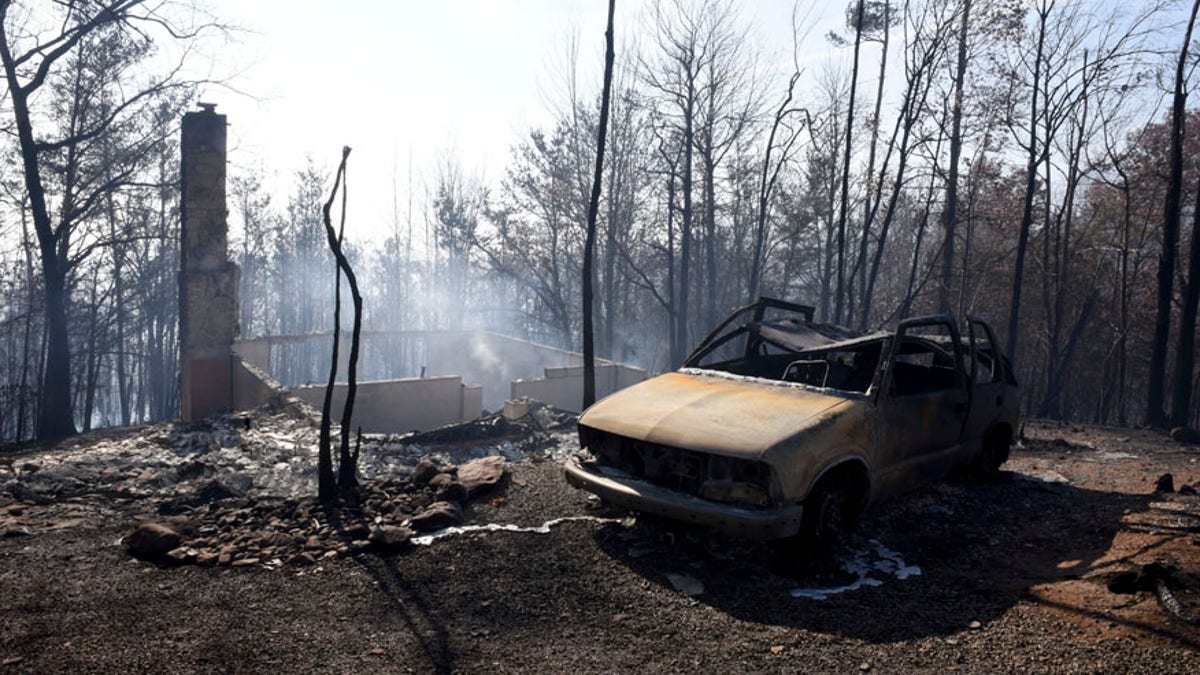
Burned out cars and chimneys are damaged from the wildfires around Gatlinburg, Tenn., on Tuesday, Nov. 29, 2016. Rain had begun to fall in some areas, but experts predicted it would not be enough to end the relentless drought that has spread across several Southern states and provided fuel for fires now burning for weeks in states including Tennessee, Georgia and North Carolina. (Michael Patrick/Knoxville News Sentinel via AP) (©2016)
ATLANTA – Recent showers and storms across much of the South have eased the severe drought in the region, but experts say it wasn't enough to make up for months of dry conditions before the rain finally fell.
More rain is needed before the demise of the drought can be declared, said Mark Svoboda, director of the National Drought Mitigation Center in Lincoln, Nebraska.
The rain has helped in the short term, though, and it also helped firefighters to rein in some the large wildfires burning in several southern states, Svoboda said.
The two largest fires in the South, which both began in the north Georgia mountains, are both 95 percent contained, national fire managers reported. The third-largest wildfire — the blaze in Great Smoky Mountains National Park blamed for 14 deaths when its flames and embers rode high winds into the Gatlinburg, Tennessee area Nov. 28 — is more now more than 80 percent contained, authorities said in their most recent update.
A new national report on drought conditions is expected to be released later Thursday by the Drought Mitigation Center. The report will show how recent rains have affected various levels of drought in hard-hit states like Georgia, Alabama, Tennessee and others.
Abnormally dry conditions began showing up in March in parts of the South, and became more severe later in the spring, all through the summer and fall, drought maps show.
"It takes a long time to go into a drought and it takes a long time to get out of it, and this one has been a doozy," Georgia State Climatologist Bill Murphey said.
Related News...
When looking back six months, large parts of the South have seen only 50 percent to 70 percent of their normal rainfall for the period. To make up for such long-term rainfall deficits, "you need sustained rains to sort of gradually work their way down into clay-type soils," Svoboda said.
With some of the recent thunderstorms, though, "quite a bit of it was heavy so there was a tremendous amount of run-off," said John Christie, Alabama's state climatologist. "It just came too fast to soak in."
Christie looks to the flow of streams as one way of telling him the story of what's happening with the drought. "I'm seeing many of the streams now fall back below average," he said Wednesday.
Lakes also remain low. Lake Lanier, a main source of drinking water for metro Atlanta, is nearly 9 feet below its normal full capacity for this time of year, Murphey said.
But the weather pattern is showing some positive signs and moisture from the Gulf of Mexico could soon produce more rains across the South, forecasts show.
"The good news is that the Gulf is opening up and has been opening up," Murphey said.

